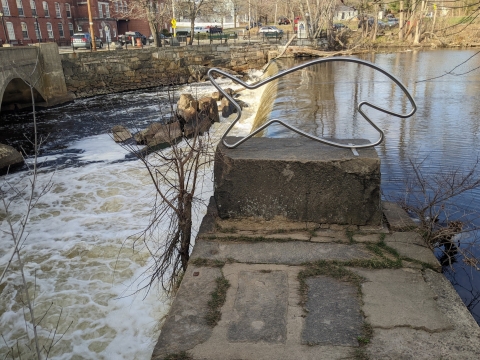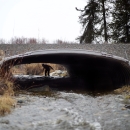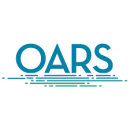States
MassachusettsThis project will remove the Talbot Mills Dam on the Concord River in the Sudbury, Assabet and Concord watershed near Billerica, Massachusetts. The dam removal will benefit blueback herring, river herring, American shad, American eel, sea lamprey, spotted turtle, and wood turtle. The Talbot Mills Dam has been cutting off native fish migrations since the 1700’s. Major restoration work has been on-going for more than 20 years by federal, state, non-profit and municipal stakeholders to improve the water and habitat quality of the Concord River after more than 200 years of disruption. This is the largest dam removal ever in Massachusetts, opening 135 miles and 740 acres of habitat, including 260 acres of lakes and ponds, spawning, rearing and thermal refugia habitat for native fish species. This dam removal will reduce flooding, improve water quality, and improve recreational boating.
Project Quick Facts:
| Project Status | In Development |
| Location | MA, Middlesex County |
| NFPP Project Funding | $1,043,951 |
| Restoration Techniques | Dam Removal |
| Accomplishments | 135 stream miles reopened, 260 acres reopened |
| Partner Project Lead | OARS |
The National Fish Passage Program combines technical expertise with a track record of success.
Implemented primarily through the Service's Fish and Wildlife Conservation Offices, the National Fish Passage Program provides financial and technical assistance to partners across the country. Since 1999, the program has worked with over 2,000 local communities, Tribes, and private landowners to remove or bypass over 3,400 barriers to fish passage fish passage
Fish passage is the ability of fish or other aquatic species to move freely throughout their life to find food, reproduce, and complete their natural migration cycles. Millions of barriers to fish passage across the country are fragmenting habitat and leading to species declines. The U.S. Fish and Wildlife Service's National Fish Passage Program is working to reconnect watersheds to benefit both wildlife and people.
Learn more about fish passage and reopen access to over 61,000 miles of upstream habitat for fish and other animals. Staff have expertise in fish migration and biology as well as financial, engineering, and planning assistance to communities, Tribes, and landowners to help them remove barriers and restore rivers for the benefit both fish and people.
Fish passage project proposals can be initiated by any individual, organization, government, or agency. However, proposals must be submitted and completed in cooperation with a Fish and Wildlife Conservation Office. (Please note that fish passage projects being used for federal or state compensatory mitigation or required by existing federal or state regulatory programs are not eligible for funding through the National Fish Passage Program.)
CONTACT A FISH PASSAGE COORDINATOR IN YOUR AREA TO GET STARTED.



